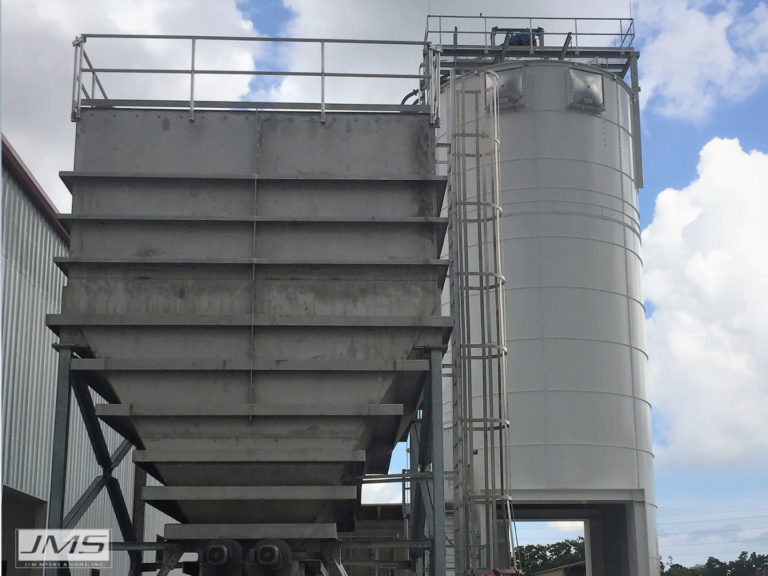Watch this JMS presentation on storage solutions for biosolids. Greg Hyde, Product Manager | Material Handling from JMS, talks about live bottom hoppers, silos, and storage bins. This presentation also talks about the best practices for designing biosolids storage solutions for dried and wet sludge.
Storage solutions are used in Wastewater Plants all over the world. They are used, for both wet biosolids applications and dry biosolids applications. The most popular styles of biosolids storage used in plants are solos, live bottom hoppers, and bins.
Biosolids Storage Solutions: Silos
Silos are a cylindrical storage for both dry and wet sludge but are more often used in dry sludge, or lime applications. Silos may be, but are not typically used in wet sludge applications, mainly due to the plants desire to utilize stainless steel equipment. The larger bolted silos are not available in stainless steel. A silo can be shop welded in stainless steel if the diameter of the silo is less than 14’ (dependent on shipping logistics). If it is greater than a shippable diameter it will require a site-bolted, coated carbon steel silo.

Biosolids Storage Solutions: Live Bottom Hoppers
Hoppers are square or rectangular storage vessels for wet sludge applications. Hoppers can be either shop welded up to a shippable size or they can be field welded for larger volumes. JMS has supplied volumes of up to 500 cubic yards usable; higher volumes are possible. Internal tension bars and external reinforcements are required especially on these larger hoppers making them structurally sound and able to meet appropriately dictated seismic and wind loads. Hoppers can also be outfitted with live bottoms for distribution to either pumps or a truck load-out.
Watch the Rest of This Webinar on Biosolids Storage Solutions to Learn More About:
- Silo storage design
- Live bottom hopper design
- Hopper and bin design
- Key application and design variables
- JMS Project Spotlight
- And more
Greg Hyde joined the JMS Sales and Marketing Team as Product Manager | Material Handling. Greg has over 30 years of experience in material handling systems, having held high level engineering, sales and business management positions with large full line conveyor manufacturers. He is responsible for overall support and growth of the JMS Bio-HANDLING product line. Outside of work, Greg is a founding member of the “Jammin’ 4 Water” (Water Charities Fundraising Inc.). In regards to his position, Greg says, “ JMS has a rich history in design, quality and material handling. I’m excited to be part of this great team and look forward to guiding the Bio-HANDLING product family for long-term growth.”
